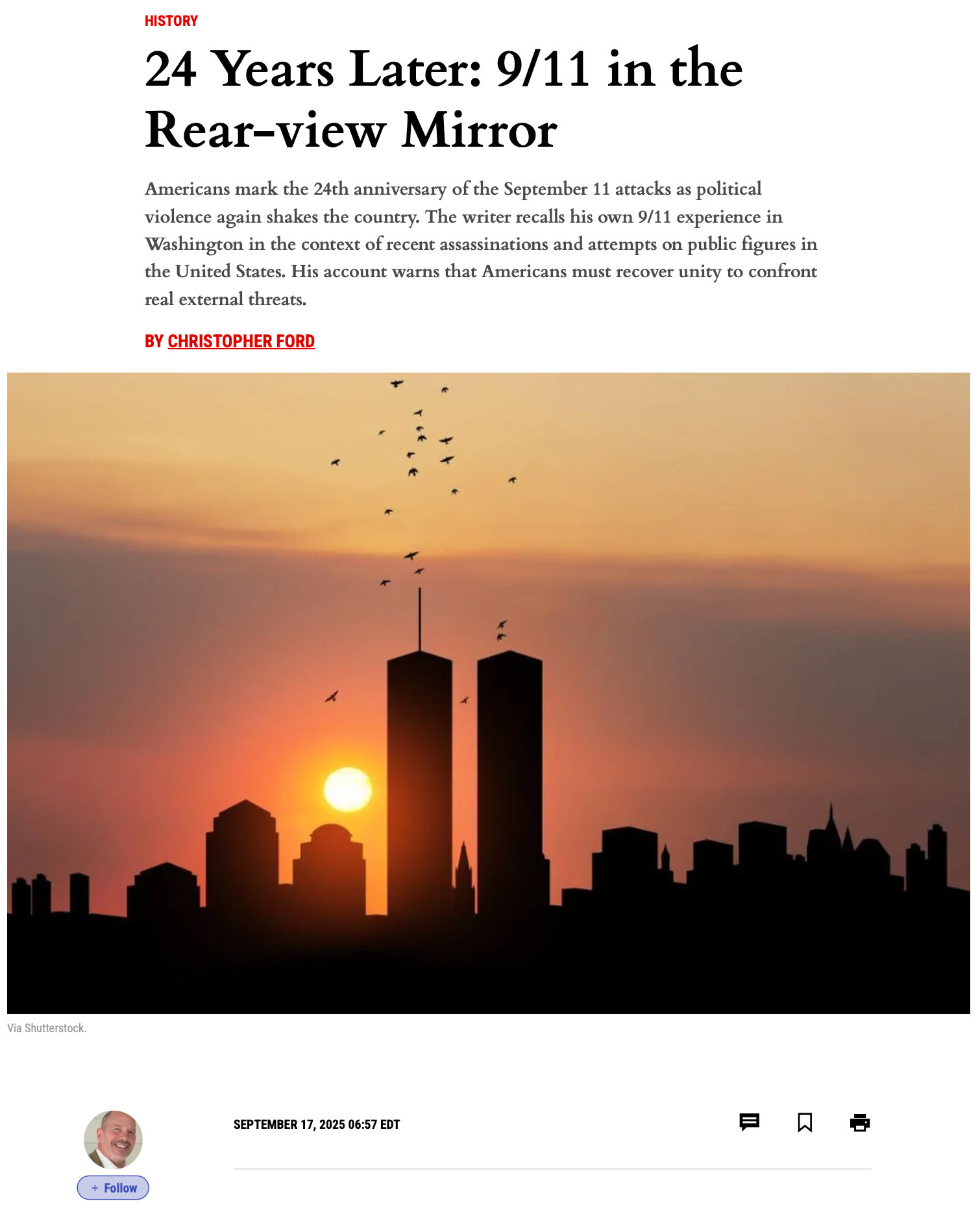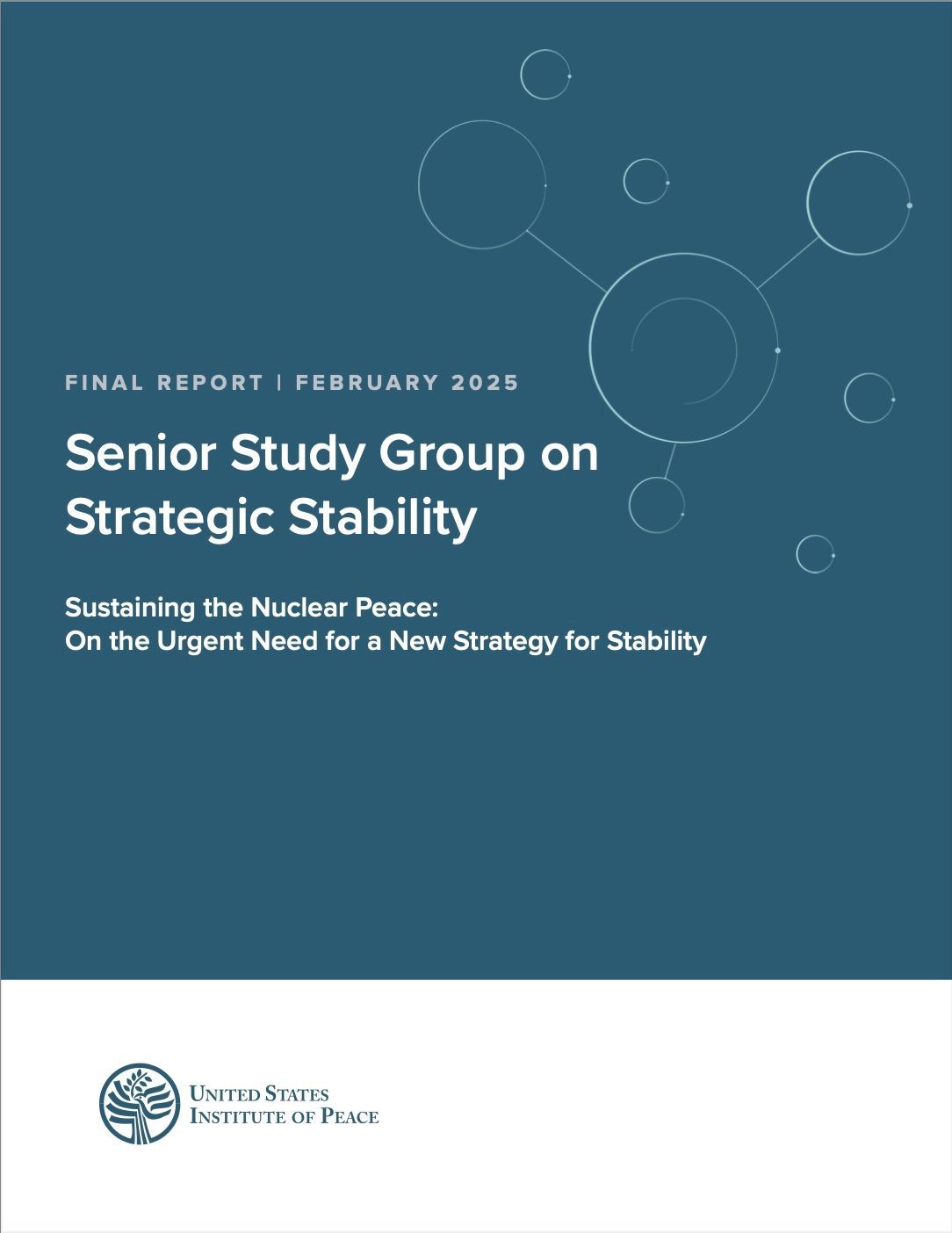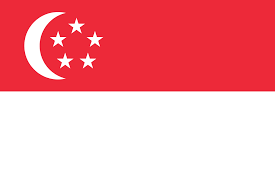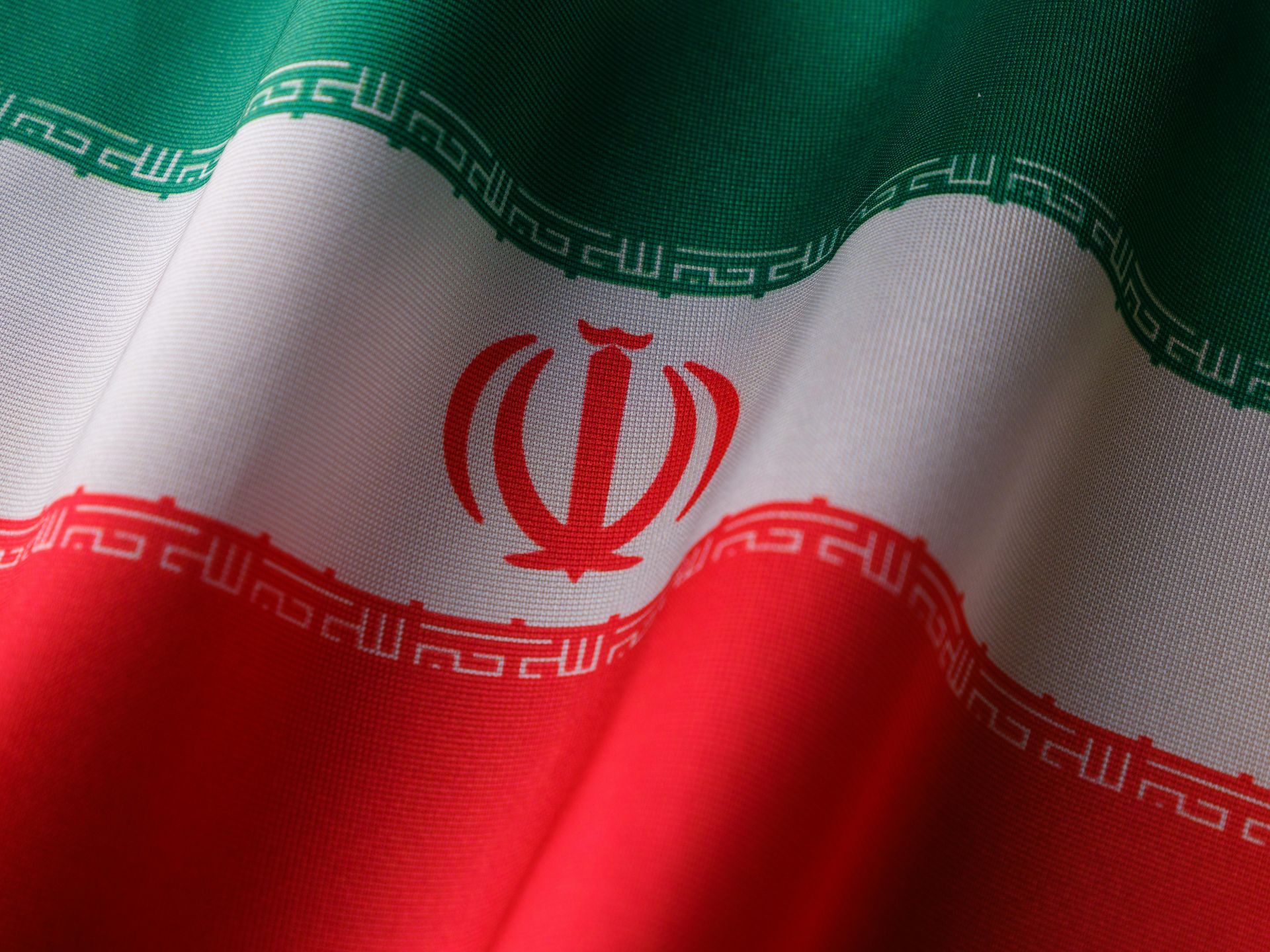“Type A” versus “Type B” Proliferation Risk and the Challenge of This Era
Below is the prepared text upon which Dr. Ford based his remarks at a briefing for Congressional staffers on September 30, 2025, organized by the University of Pennsylvania’s Washington Center and the Wilson Center.
For my contribution to this terrific panel, I’d like to highlight the strategic and conceptual novelty of the challenge we face today as a result of China’s military power and massive nuclear weapons build-up.
You hear lots of talk these days about the emergent “three-body problem” the world confronts today as we try to deter threats from two nuclear-armed near-peer adversaries at the same time, and this is certainly a huge problem. I want to emphasize here, however, that this emerging multipolar world is also likely to be unprecedentedly problematic from a nonproliferation perspective.
These are only my personal views, of course, and they won’t necessarily represent those of anyone else, but let me explain why I think this is such a challenge.
The Unprecedented Challenge of “Double-Multipolarity”
The problem is related, I think, to the basic structure of the international system. I’ve spoken about this in more detail elsewhere, but if you think of the world in terms of the structure of its highest-level power arrangements, you can see that its “polarity” – how the largest chunks of power are arranged – has historically varied. And it has varied both in terms of overall geopolitical power (think of conventional military might, economic size, and population and resources) and in terms of specifically nuclear weapons power.
Just after the end of the Second World War, the global system was bipolar in geopolitical terms – divided between the U.S. and USSR – but in nuclear terms it was initially unipolar, for we were initially the only player with “The Bomb.” After the Soviets detonated their first bomb in 1949, it then became bipolar in both the geopolitical and the nuclear senses.
After the end of the Cold War, things shifted again, becoming geopolitically unipolar, with only the United States occupying a real “superpower” spot. Yet it was in nuclear terms still bipolar, since Russia continued to possess an arsenal equivalent to our own. So in that sense, the world went from geopolitically bipolar but unipolar in nuclear terms to bipolar in both senses, and then then on to being unipolar in geopolitics but still bipolar in nuclear weapons.
Today, however, the world is becoming multipolar in both senses for the first time in history, with three primary players in both geopolitics and nuclear weapons. We’ve not seen that before, and I want to stress the novel a set of nonproliferation problems it creates.
“Type A” versus “Type B” Proliferation Risks
These structural shifts were hugely consequential for nonproliferation policy. Nonproliferation worked relatively well in those previous eras, in large part because the primary “poles” in each of these prior global configurations all seem to have felt at least some structural incentives to support nonproliferation. While there were instances of proliferation, including some deliberate encouragement of it – such as with the Soviets helping get China started, and China later helping Pakistan – the world didn’t see the huge cascade of proliferation many once expected.
But today, under “double multipolarity,” the challenges are greater.
For decades now, the primary focus of the international community’s nonproliferation concern has been the threats posed by the prospect of nuclear proliferation to smallish geopolitical disruptor autocracies like North Korea and Iran motivated by destabilizing regional security agendas. I think of these as “Type A” proliferation risks.
But in the present environment, rogue state proliferation is now only one of the types of proliferation challenge we need to be worrying about. Increasingly, concerns are being raised, too, about the prospect of proliferation to states that aren’t nasty and destabilizing rogue regimes but rather otherwise peaceable democracies who face threats from Russian or Chinese predation – threats it’s increasingly difficult to imagine being deterred by collective security arrangements grounded in America’s military power and willingness to bear cost and risk to protect our allies. This is what I think of as “Type B” risk.
Rather than being “bad” regimes that seek nukes for a mix of motives about which any serious person should be greatly concerned, in other words, the new potential proliferators people worry about are “good” regimes increasingly tempted to seek such weaponry for unquestionably defensive purposes when threatened by the most powerful and brutal dictatorships on the planet.
Living on New Diplomatic Terrain
These emerging Type B proliferation challenges may be qualitatively different – and, from the perspective of U.S. and other Western policymaking, much more complicated and challenging – than those to which we’ve become accustomed. It may be, for instance, that Type B issues will scramble the traditional cast of characters in nonproliferation diplomacy.
- Will some of the states in the Non-Aligned Movement that for years have basically defended countries such as Iran against Western nonproliferation pressure, for instance, still defend fissile material production and “virtual nuclear weapons possessor” status if at some point we’re talking about South Korea, Japan, Poland, Ukraine, Sweden, or Taiwan? Or will they suddenly decide that nuclear weapons-related technology proliferation is unremittingly bad after all, and that the international community needs to draw the line before one of America’s friends postures itself in such a fashion?
- Will some of the Western states that have traditionally taken absolutist positions against proliferation come to make an exception for stable, rights-based democracies whose freedoms and even existence are threatened by territorially aggressive revisionist superpowers?
- Will some states traditionally focused upon prioritizing disarmament and stigmatizing Western military and nuclear power suddenly discover that more American military might and “extended” nuclear deterrence is actually a good thing because it makes U.S. allies less likely to weaponize?
- Might some longstanding U.S. allies end up in a de facto diplomatic alliance with Iran, North Korea, and their defenders in insisting upon a “right” to produce fissile material and the acceptability of choosing to withdraw from the global NPT regime?
So you can see how the advent of Type B proliferation challenges might make the diplomatic terrain rather more complicated.
Maslow’s Hierarchy of Policy Needs
Beyond merely diplomatic discourse, why is the future security environment likely to be so much more problematic from a nonproliferation perspective? Well, if it doesn’t seem too glib, I’ll borrow a bit from the American psychologist Abraham Maslow and the famous motivational theory he developed.
In Maslow’s schema – which you could think of as being made up of human needs arranged in a pyramid, ascending to a point – basic requirements such as nutrition are depicted as being more foundational, while others such as self-actualization are considered “higher” needs. Notably, higher needs tend to be dependent upon “lower” ones being satisfied. (Having a fulfilling job, for instance, is a lofty psychological need, but it necessarily takes a back seat if you’re starving or living in continual physical danger.) Satisfaction of a higher need, on the whole, relies upon more basic ones already having been met.
So imagine, if you will, a “Maslow’s Hierarchy of Policy Needs,” in which those various needs include strict fidelity to global nonproliferation norms as well as a wide range of additional foreign policy and national security objectives. I would posit, furthermore, that from the perspective of any single actor in the international system, nonproliferation represents a reasonably “high” level of policy need – one the prioritization of which is dependent upon the prior fulfillment of some other more foundational requirements.
I won’t go so far as to say that nonproliferation is exactly a luxury good. After all, being able to live in an international system that is not routinely wracked by conflicts capable of escalating into nuclear war is in its own way a pretty foundational requirement for lots of other good things. From the perspective of any single player, however, the effort to be put into working on nonproliferation must to some degree necessarily be balanced against the effort that must be put into a whole host of other potential things. After all, seriously pursuing any good thing inevitably exacts an opportunity cost in terms of the time, effort, energy, political capital, and resources that are not devoted to pursuing alternative priorities. Navigating such trade-space is at the heart of policymaking.
The problem with Type B proliferation risks in this regard is that the changed geopolitical context that produces them may also change how players interpret the relative prioritization of competing objectives within our Maslowian hierarchy. Simply put, “higher” policy needs are easier to prioritize in comparatively benign geopolitical circumstances such as the one we inhabited after the end of the Cold War than they are in a rougher and more threatening environment. Tougher times force players to focus relatively more upon ensuring the availability of foundational goods more closely related to security and even survival, and leave less time and attention for higher ones.
Impact on Nonproliferation
For this reason, “double-multipolarity” may undermine collective international reactions to both varieties of proliferation risk. As noted, the major players in previous configurations of global power polarity previously felt some incentives to support nonproliferation – as illustrated, most famously, by the great work of the United States and the Soviet Union in jointly drafting the Nuclear Non-Proliferation Treaty. But this is less likely to be true in a “double-multipolar” environment of strategic rivalry.
After all, the other two poles of China and Russia are seeking to upend the hitherto-U.S. led world order, and in this context do not seem particularly mind Type A proliferation – which is far more problematic for and threatening to the United States, and disruptive of our grand strategy, than it is for them. In fact, China has been ignoring U.N. sanctions on North Korea for years, and the Iranians and (especially) North Koreans have recently become the Kremlin’s de facto military allies. As a result, “three-body problem” rivalries are making the world increasingly safe for Type A proliferation.
Meanwhile, we may ourselves may come to face increasing challenges from Type B proliferation, for the geopolitical context that produces Type B risks may also change the relative prioritization of competing American objectives within “Maslow’s hierarchy of policy needs.”
Type A rogue state proliferation was a “front and center” concern for us and most other major countries in geopolitically happier times less troubled by competing strategic priorities. In that context, it was easy to conclude that the highest and best use of our collective policy energies was to “secure all vulnerable nuclear materials around the world,” and easier to conclude that any new instance of nuclear weapons proliferation would always be much worse than its alternative.
In the context of Type B risk, however, other issues could easily come to be seen as relatively more important in comparison with nonproliferation. To put it bluntly, as valuable as the nonproliferation regime is, it would be difficult to imagine persuading leaders of a country immediately and directly threatened by Russian or Chinese conquest – and who felt their best chance of deterring such attack lay in nuclear weaponization – that fidelity to nonproliferation norms is so important that they should sacrifice their country on its altar.
All this is likely to confront us with challenges for which the inherited patterns of nonproliferation policy leave us unprepared. We may be asked more than ever before to wrestle with tough questions about when – or whether – nonproliferation should still “win” vis-à-vis other important priorities.
Hard Decisions Ahead
I can’t predict for you how such a rethinking may play out, nor any crisp account what the “right answers” are likely to be as we grapple with such questions. My point here is just that struggling with these issues will require equity-balancings far more challenging that what we saw in nonproliferation diplomacy during the post-Cold War era.
I think we need to work doubly hard to ensure our own conventional and nuclear military capabilities – and our willingness to stand alongside our allies in confronting Chinese and Russian threats – are up to the task of forestalling Type B proliferation by making it seem unnecessary. That’s the traditional U.S. answer, and it’s still “Plan A.”
Nevertheless, since the world does face growing Type B pressures, we will also need to start thinking about what “Plan B” might look like.
—Christopher Ford







